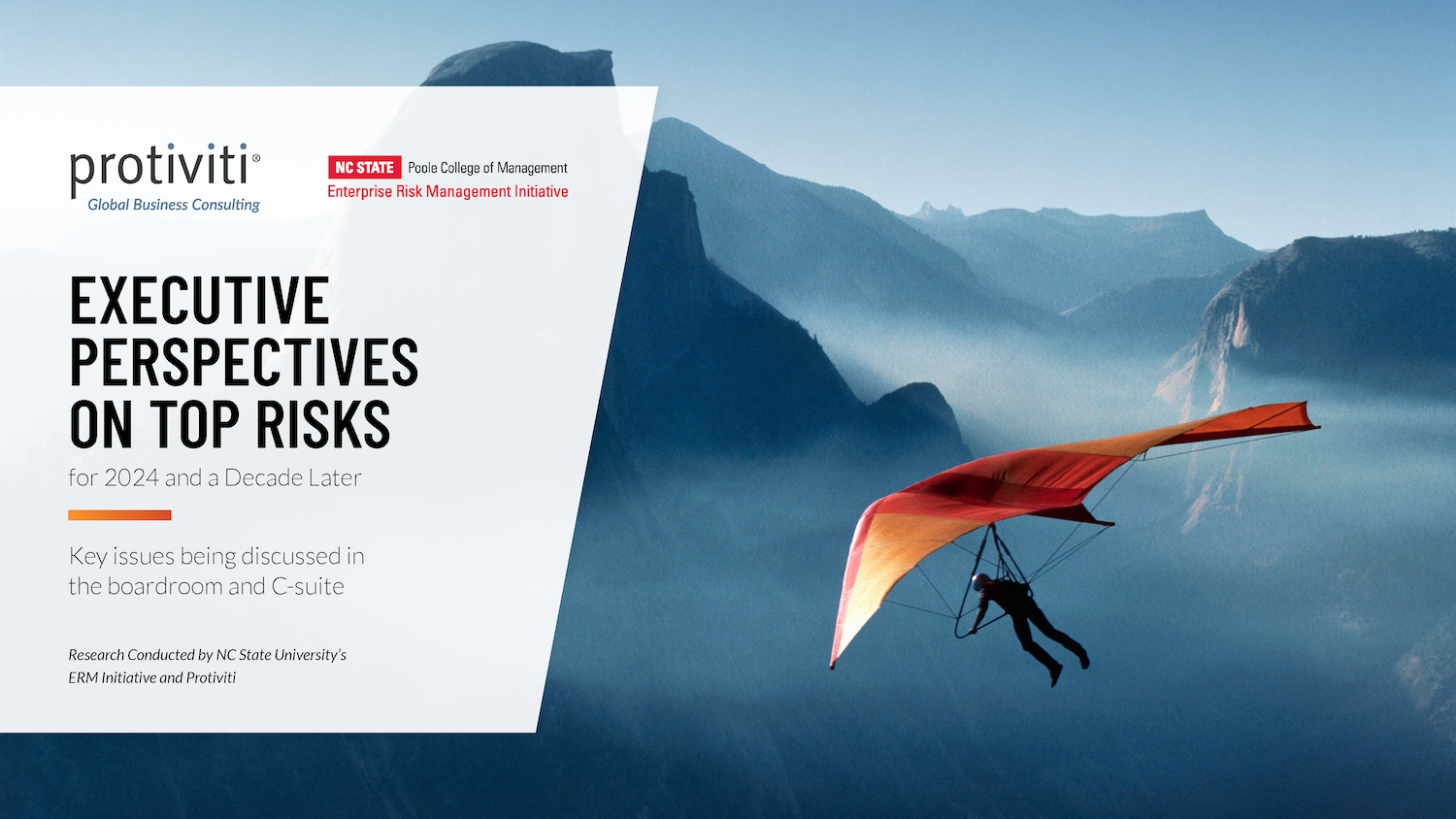A Changing Risk Landscape – A Study of Corporate ERM in the U.S.
Towers Perrin is a professional services firm whose purpose is to help companies work through complex issues in many areas using innovative solutions. One of their practice areas is Enterprise Risk Management (ERM). The ERM group helps their clients to understand the risks facing their business and adds value by assisting in managing their risk in order to achieve their business objectives.
In 2006, Towers Perrin and Monitor Group surveyed 75 senior finance executives who represent publicly traded US companies with over $1 billion in revenues across many non-financial industries. The survey results indicate that 85% of the participants believe that their company’s focus on risk management will increase in the next five years. This phenomenon seems to be due to the changing expectations of various stakeholders. The survey also showed that 63% of participants indicated that they were concerned about risk management at their company. From this determination several key risk drivers were identified. They include corporate governance, natural disasters and pandemics, increased liability risks, investments in complex infrastructure, and the demands of cross functional stakeholders.
The survey asked respondents to identify key risks they felt are rising in importance. Although many risks were identified, a few risk groups emerged as being the most important because of their potential impact on any company. These include:
- Operational Risk – The survey defined this risk as process failure and safety risks. It emerged as the most important risk group facing the companies surveyed. For many of the companies, operational risk often manifested itself as supply chain risk. This risk is driven by increased globalization, expanding participation in the value chain, and external issues including natural disasters and political disruption.
- Property and Casualty Risk – This risk is traditionally comprised of general and product liability, fire, workers compensation and natural disasters. Companies are now moving away from insurance and turning to the capital markets as a new way to share these risks.
- Business and Strategic Risk– This grouping includes political risk, reputational risk, and general business risk. Respondents felt that these risks were important because of their indistinct nature and the difficulties associated with their identification, quantification, and management.
- Financial and Capital Market Risk – These risks include interest rate, commodity, foreign exchange, credit, and commodity risk. While these risks are not new, their prevalence has increased due to expanding foreign operations, commodity inputs, and debt obligations. Traditionally hedging has been used to mitigate financial and capital markets risk. Now companies are looking for more sophisticated identification, measurement, and risk reduction tools. Often this includes relying on consulting firms with experience in capital markets as well as in specific industries.
- Compliance Risk – This category encompasses risks from accounting, labor, safety and security concerns. The respondents felt that their companies have strong methods in place for dealing with these risks because they are relatively standard.
- Pension and Human Resource Risk – The survey indicated that companies are beginning to view these risks together and track how they affect the other risks across their company. Pension risk must be managed effectively because of its strong relationship with the company’s overall financial position as well as capital and market risks. Human Resource risk is linked with operational risk. As communication increases across these functions risk management is expected to become more effective.
- Enterprise Risk Management – Regulated industries have long since begun adopting ERM, but it is a slow process in non-financial corporations. The survey indicated 70% of respondents valued ERM because it allowed companies to move away from the “silo” approach and foster communication across the organization. Some felt that there was still some uncertainty about what ERM is, how to implement it and who should be responsible for it. Despite this, one-third of the respondents have an ERM program in place or have committed to doing so.
The survey shows that risk management is becoming an issue that more companies are focusing time and money on. There are an infinite number of risks to manage but the respondents seem to agree that ERM is a way to foster enhanced communication and cooperation as well as improve a company’s risk-return relationships.
Original Article Source: “A Changing Risk Landscape – A Study of Corporate ERM in the U.S.,” Towers Perrin and Monitor Group, 2006 Survey


